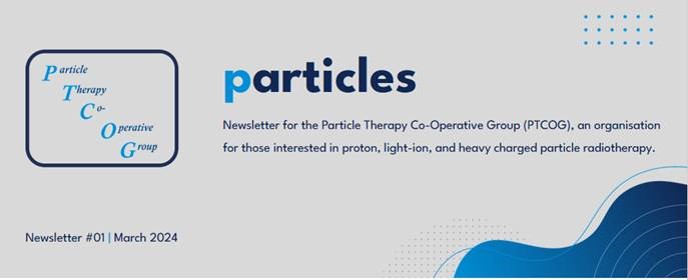
White Papers and Guidelines
Risk Assessment of Patient-Specific Quality Assurance (PSQA) Methods in Particle Therapy
A white paper on the optimization of patient-specific QA in PT is currently being finalized and has been submitted as a draft for approval as an official PTCOG report:
To date, PSQA using phantom measurements is common practice in most PT centres but has been criticized for its limited potential for error detection and high workload. With access to machine protocols and advanced dose calculations (especially Monte Carlo), many centres are reconsidering the need for measurement based PSQA, while discussing concerns about the safety and efficacy of alternative PSQA methods. Based on discussions and workshops starting in 2015, a working group of the PTCOG Treatment Efficiency Subcommittee evaluated since 2020 measurement-based, log file-based PSQA and (independent) secondary dose calculations. The aim is to provide the PT community with recommendations on these different approaches. The working group is composed of international experts using different devices and treatment procedures.
A risk assessment was performed using a similar process-based FMEA formalism as described in the AAPM TG-100 report. The roles of OIS, TPS, TDS and their data communication were considered. A generic workflow based on the processes of the participating institutes was developed, failure modes were identified for each step and finally those process steps were selected that could potentially influence PSQA applications. The workflow thus reduced to PSQA-relevant process steps was assessed once without any PSQA measures in place to form a risk baseline. It was then re-evaluated three times applying the respective, specific PSQA method. The associated risk mitigation steps were successively introduced in two FMEA iterations, first considering data transfer and then the full PSQA process. The average risk priority numbers (RPN) were calculated per process step, from which the average risk reductions per PSQA method were then extrapolated, according to their two-stage introduction.
PSQA-related data transfer slightly increased the average risk for all three PSQA methods (measurement-based: 7.8%; secondary dose calculation: 5.0%; protocol-based: 0.1%). However, when considering the complete PSQA processes, all methods led to a risk reduction. The protocol-based PSQA showed the most significant risk reduction (-39.2%), followed by the measurement-based method (-31.8%). Secondary dose calculation contributed the least (-6.8%). A combination of secondary dose calculation with measurement-based or protocol-based PSQA led to an average risk reduction of -36.7% or -45.3%, respectively, over the entire workflow, which makes their combined use appear reasonable. The identification of individual process steps where the risk could increase above the baseline value due to the (inappropriate) application of individual PSQA measures, which would therefore require further, individual precautionary measures, also appeared noteworthy.

In summary, the following conclusions were drawn:
- Log file-based PSQA is on average less risky and more efficient than the measurement-based method. It requires less equipment and allows testing of treatment fields under the same conditions as patient treatment. In addition, log files support adaptive proton therapy and facilitate the assessment of treatment quality immediately after delivery.
- Measurement-based PSQA continues to be a valuable approach to risk reduction. Log file and measurement based PSQA do not mitigate all risks equally, and for certain risks, one method may be more beneficial than the other.
- An independent secondary dose calculation is necessary when centres move away from measurement based PSQA. It is strongly recommended that either the primary or secondary calculation is an accurate Monte Carlo dose calculation.
- Quality control of protocol data and all data transfers is required for safe use of log file based PSQA.
- Proper commissioning, including phantom-based measurements, is strongly recommended when introducing new techniques or treatment sites.
This report summarizes the latest status of a white paper draft envisaged for internal PTCOG publication in the near future. To improve the general data basis, a web-based survey is currently underway that allows the specific application of the PSQA FMEA described for each PT facility individually. If you are interested in participating, please contact Daniel Robertson (see authorship).
Abbreviations:
FMEA failure modes and effects analysis
OIS oncology information systems
PSQA patient-specific quality assurance
PT particle/proton therapy
TDS treatment delivery system
TPS treatment planning system
Authors: Daniel Robertson1, Christina Vallhagen Dahlgren2, Chin-Cheng Chen3, Heng Li4, Niek Schreuder5, Chris Beltran6, Jay Flanz7, Frank Emert8
1 Department of Radiation Oncology, Mayo Clinic, Phoenix, Arizona, USA,
(
2 The Skandion Clinic, Uppsala, Sweden
3 St. Jude Children’s Research Hospital,
4 Johns Hopkins Medicine
5 LEO Cancer Care, Knoxville, Tennessee, USA
6 Mayo Clinic, Jacksonville, Florida, USA
7 Harvard Medical School, Cambridge, MA, USA; Retired
8 Center for Proton Therapy, Paul Scherrer Institute, Villigen PSI, Switzerland
